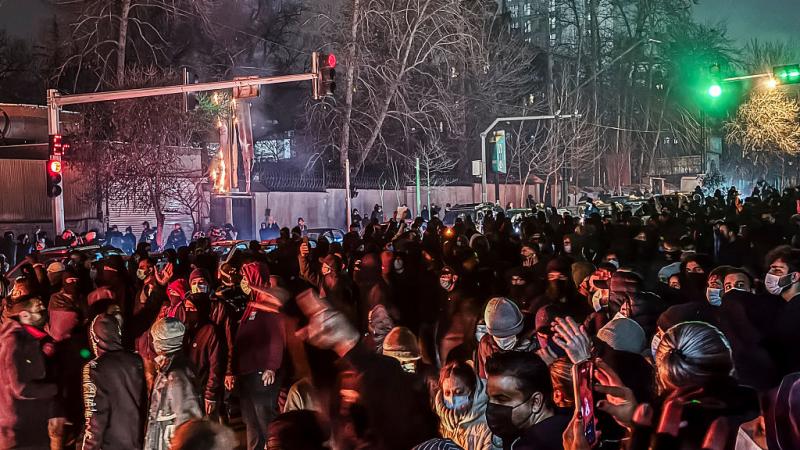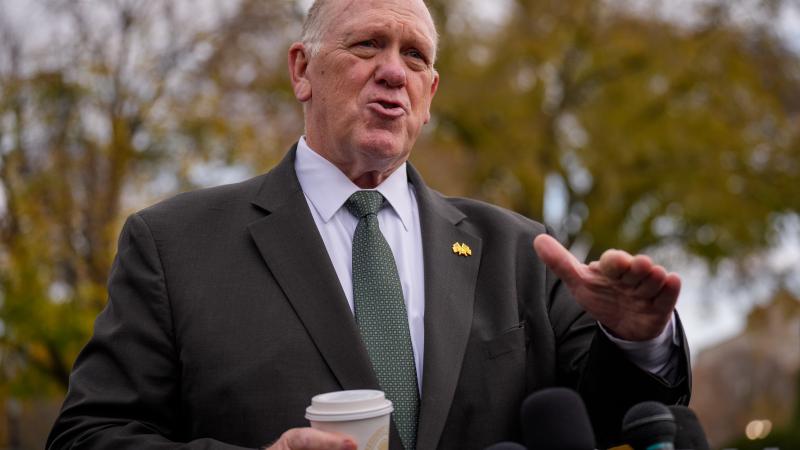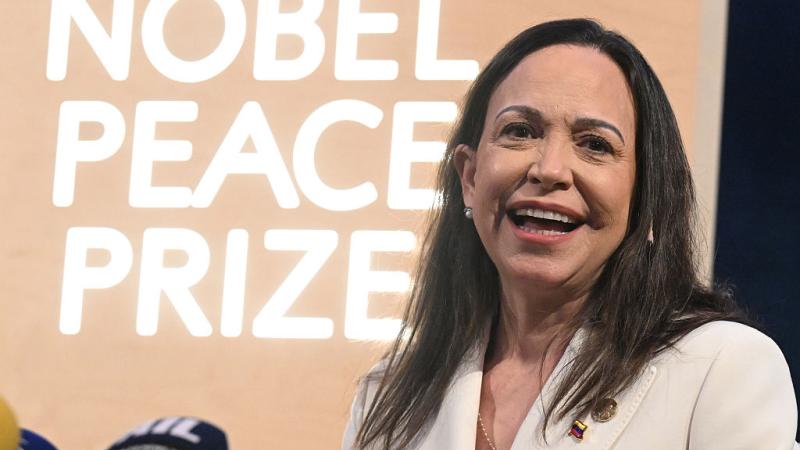With legal battles now settled, college season begins with athletes cashing in big and small
How the landscape of college sports has shifted amid various court cases over the last three years
For University of Maryland cross-country and track athlete Katie Altieri, the end of a long, hard practice is now a bit more rewarding than just resting a tired body – she checks her bank account, knowing that money from her NIL sponsorship deal is about to hit.
“It wasn't even that much. But I was like, 'I kind of just want to say I signed one,'” she told Just the News a few weeks before the start of the new NCAA college football season, in which some stars stand to make millions from such deals.
Though Altieri's payday is small compared to, say, that of a big-time college quarterback, both are the product of years-long legal battles between college athletes and the National Collegiate Athletic Association.
What is NIL
NIL stands for “name, image and likeness.” For years, college athletes were not permitted by the NCAA to profit from their NIL, with the league arguing scholarships were enough of a financial incentive.
This changed in 2021 when the Supreme Court ruled that student-athletes could profit off of their NIL, allowing them to sign brand deals and profit off of social media.
In the 2021 case, Justice Brett Kavanaugh wrote “the NCAA is not above the law.”
While the average NIL deal ranges from roughly $1,000 to $10,000, there is no set limit for how much money a student-athlete can make. Big names at big schools can make tons of money in brand deals.
One prominent name is recent Lakers draft pick and son of LeBron James, Bronny James.
James played at USC and his estimated NIL deal value for the 2023-24 season was 7.2 million dollars, an amount split between various contracts with brands such as Nike, Beats by Dre and others.
Since the 2021 ruling, universities have eased the process for athletes to sign NIL deals.
Altieri said that Maryland athletes primarily use an app called Opendorse, which aggregates potential sponsors for the athletes and discloses the deals with the university’s compliance office when they are signed.
“They’ve made it super easy,” she said. “If you do get one, you just go on there, fill out a form and you’re good.”
But not all NIL deals are not created equal.
As someone who competes in the non-revenue-generating sports of cross country and track and field, Altieri knows it first-hand.
“For me personally, some of the time I don't really feel like doing it,” she said about her NIL offer opportunities. “Sometimes they’re just like 20 dollars and I say ‘Yeah, not worth it.’”
Where we are in the college sports landscape
A Philadelphia-based U.S. appeals court ruled in mid-July that college athletes “whose efforts primarily benefit their schools” may be considered employees and entitled to compensation.
That court ruling is viewed as a major setback to the NCAA and their efforts to define “student-athletes.”
For decades, the NCAA has held firm that student-athletes are students first and that athletic scholarships provided by their institutions are reasons for them to continue their educations. But since athletes are so profitable for many universities, they have been in legal battles on the issue for years.
The NCAA generated nearly $1.28 billion in revenue for the 2022-23 fiscal year. And the league's deal with CBS and Warner Bros. Discovery alone for rights to the men's Division I basketball tournament bring in about $900 million annually, according to Fox Sports.
The league's Big Ten Conference – which includes Maryland, Nebraska and Rutgers – has in recent years generated as much as $802 million
The athletes behind the suit in Philadelphia are seeking more modest hourly wages similar to those earned by their peers in work-study programs. They argue that colleges are violating fair labor practices by failing to pay them for the time they dedicate to their sports, which they say can average 30 or more hours a week.
“This notion that college athletes cannot be both students and employees is just not accurate when you have student employees on campuses,” said Paul McDonald, the lawyer representing the plaintiffs. “It's just beyond belief, the idea that the athletes would not meet the same criteria as employees.”
Following that ruling, the NCAA, its power conferences and a group of lawyers representing many Division I athletes outlined how schools can pay their athletes Friday.
The current plan allows for current and former athletes (dating back to 2016) to collect their earnings from a $2.78 billion pool of damages, while future terms will likely revolve around schools giving their athletes payments from an NIL fund valued between $20 million and $22 million.
Impacts of the courts
The decisions have made competing in major sports nearly impossible for less recognizable brands.
When students can profit off of their NIL and sign lucrative brand deals, would they prefer to play football at a storied program with a large following like Alabama or Michigan, or go to a smaller power conference competitor like TCU?
That sentiment is not limited to football either.
If a college athlete has the option to play basketball for a blue blood like Duke with tons of sponsorship opportunities to build their brand, or a big school in a small town like Kansas State, which way will they lean?
These changes have also made initial signings and commitments of athletes almost worthless.
3,843
That’s the number of football players who announced their intention to transfer in the 2024 transfer cycle. The number has steadily increased since the new age of NIL began. The previous record for football was set in 2023, when 3,502 student-athletes entered the transfer portal.
The vicious cycle of NIL dollars and big-name schools sweeping up the top-tier talent rages on, leaving power conference schools with less history and brand recognition in the dust.
Survival in the NIL landscape
“If we all step back, what has really changed? said B. David Ridpath, a professor of sports business at Ohio University. "The best players are still going to the best schools. Players were always getting paid under the table long before NILs, then they just criminalized it.”
For Ohio, a small Division 1 program that competes in the MAC, the new phase of NIL in the NCAA has mostly stayed the same for the school.
“An Ohio University is never going to be an Ohio State athletically,” he said. “Somebody could sign a check to Ohio University for 100 million dollars, say this it’s just for athletics, and we’re still grossly behind Ohio State.”
While anomalies will occur in college sports, Ohio beat Big 12 competitor Iowa State in football just last season, the gap between power conferences and mid-majors will always lead to the big schools attracting the top talent.
At the end of the day, whoever has the most money and infrastructure will eventually win.
Yet, NIL is still the right way to go
The NCAA held out on NIL for so long because they feared that if student-athletes were paid, then fans would stop watching college sports. However, self-promotion and brand-building were always rights for other college students.
Ridpath has first-hand experience with this duality.
During his time at Ohio, he taught internet star, boxer and co-founder of the sports drink Prime Logan Paul.
“He was making a lot of money as a student at Ohio University, doing internet Vines and the like, and that was celebrated,” he said. “But yet, for some reason, if a college athlete made one dollar above the amount of their scholarship, that somehow was criminalized.”
Paul built up his internet presence at Ohio, gaining millions of followers across different social media platforms and making money off of his name, image and likeness. Since he was not an athlete under the NCAA, his success was encouraged by the university instead of being condemned like it was for athletes.
“Honestly, I just don't look at it as a big deal, as some claim,” Ridpath said about the rage surrounding NIL from so many institutions. “I look at it as a big deal because it's an inherent right that never should have been restricted.”
Back to the 2021 ruling, the NCAA is not above the law. They skated around legalities for too long and now athletes are finally beginning to earn their rightful dollars.
Future of college sports
The athletes hold much more power than they used to across the NCAA. The furious use of the transfer portal each offseason is just one example.
“Big coaches at big schools ... want to have 100% control over the money,” Ridpath said about the displeasure of universities regarding NIL and the transfer portal. “They got away with it for a lot of years. Those days are over.”
The only thing that is certain about the ways that student-athletes receive money is that it will never go back to the way that it was. The days of just receiving scholarships are over, and this next chapter will continue to evolve as more cases get settled.
Ridpath quoted historian Taylor Branch when discussing this issue.
“Deal with the rights of the athletes first, then everything else is an adjustment,” Brach said.















